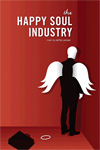Observation during the holiday travel season: How come commercial airplanes haven’t evolved in 40 or 50 years? I’m flying on the same planes I did when I was a kid. And so are you. Yeah, some have been rehabbed, their cabins reconfigured, Wi-Fi installed, but it’s still your father’s jet plane. The last American Airlines flight I was on had ashtrays built into the seats! It was an old warhorse, the Super 80, one of the most popular planes in American’s fleet. Scratch the word “popular.” I meant common. Like Pigeons. The S80 cannot possibly be popular to anyone. Narrow, short and squat, the plane flies but otherwise is a super drag. Again, like a pigeon.
Hold on Gentle Reader, for this is not a blog about the trials of air travel. God knows there are more than enough of those. What amazes me is why gains in aircraft technology have been so minimal. Most fleets literally are your father’s jet planes… even your Grandfather’s. On the American flight I took to Palm Springs the snowbird sitting next to me said he’d flown the same exact plane to Viet Nam. And it’s not just American Airlines; most carriers employ dated fleets. I’m sure it’s cheaper tweaking old planes versus building new ones but still…
What’s even stranger is that even the newest planes aren’t that different from the oldest. I wonder why. Look at how far personal computing has gone in the same time frame, say from 1960 until now: from cumbersome word processors to an endless array of digital wizardry. Yet, air travel has stayed essentially the same: metal tube, big jets, bad coffee. Where is the Ipad of personal air travel? Sir Richard Branson is taking reservations on flights to the moon but his commercial jets are pretty much the same as any other…from 1975.
Ironically, the biggest innovation in airplane technology, the rocket-like Concorde was deemed too expensive, too loud, even too fast (!) for it’s own good, and was discontinued October, 2003.
So, did airplane technology peak in the Mad Men era? You tell me. Next time you board a plane glance into the cockpit.
Check out all those knobs and dials! Do they not resemble the corny control panels from a 50’s sci-fi movie? Hey Flash Gordon, it’s 2011.






 The Happy Soul Industry
The Happy Soul Industry The Last Generation
The Last Generation